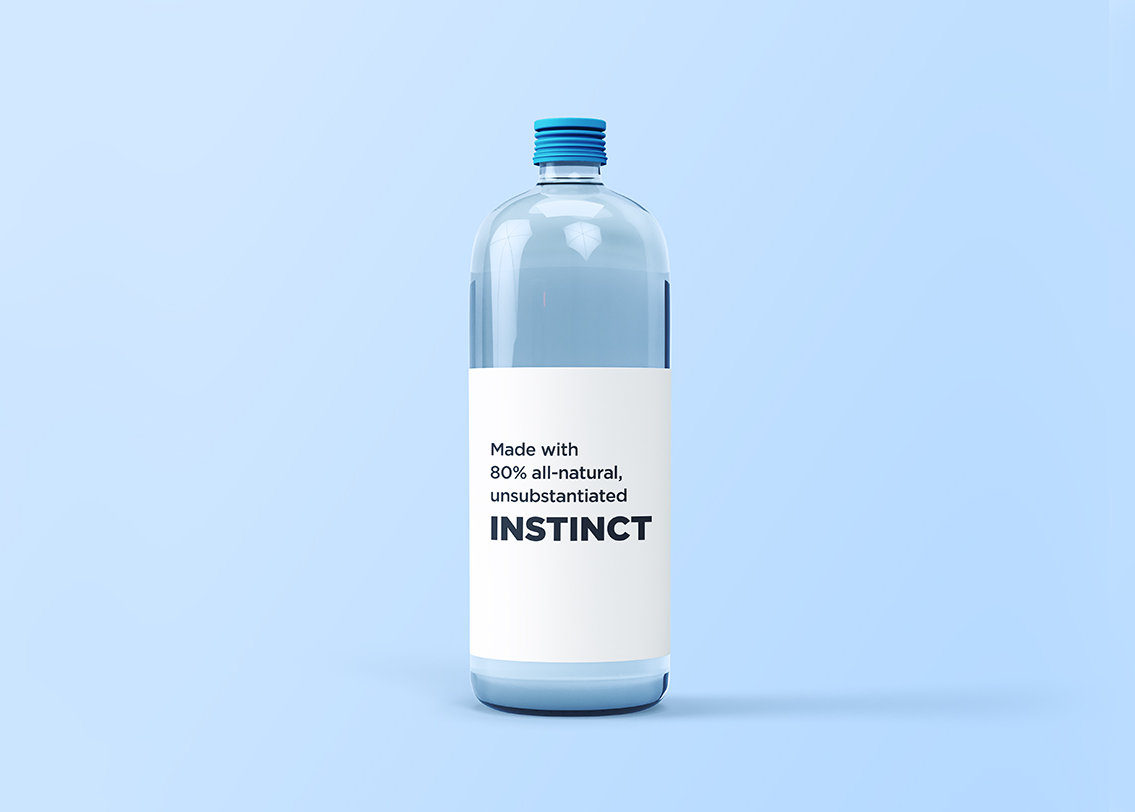Should we redesign our package? If so, which creative direction should we choose for our new package design? For the majority of businesses, answers to these important questions are based on gut instinct or group opinion. This was the clear finding of a recent Nielsen study that evaluated the typical design process, both from the brand's perspective as well as the agency's. However, making decisions based on instinct or "designing by committee" often fails to deliver positive results and, in some cases, may even hurt a brand's equity. To maximize your return on package redesigns, avoid these three common mistakes:
#1 - Fixing What's Not Broken
Many new brand managers-and even some seasoned ones-will incorrectly assess that a package design does not live up to brand expectations. As a result, he or she may spearhead a doomed attempt to improve upon the design. Qualitative groups may even support the decision, but these small groups often do not reflect the opinions of the masses. What appears to be a low bar to clear may actually be very high. Moreover, considerable resources may be wasted generating and refining new design directions, and the error not revealed until much further down the line.
Tropicana is the most infamous example of an ill-advised package redesign. However, more commonplace are the multiple attempts to redesign a package that, when measured against the current design, fail to show an improvement. PRS, the largest redesign validation service, has consistently reported that at least half of redesigns fail to improve performance over an existing design. This suggests that one ought to first ask, "Is my design broken?" before attempting to fix it-especially in the case of brands with a history of failed redesign attempts.
#2 - Design Paralysis
On the other end of the spectrum are brands who refuse to consider redesigning when they would benefit greatly from it. Some companies deem redesigns too risky, thanks to much-publicized tales like Tropicana's. This thinking may also stem from the notion that changing a design, even slightly, can disrupt the "mental availability" or recognizability of the product. However, approximately 25% of redesigns I've observed produced a new design that was EASIER to recognize than the existing design. Sometimes this happens because the designers had a keen understanding of the core brand assets, and the new design enabled them to be more visible.
Moreover, package design has other important purposes beyond maintaining current buyer recognition. These include shelf or online standout, line navigation, strategic messaging, distinctiveness, and quality perceptions. In any given category, there are effective and ineffective designs across many performance dimensions. The decision to redesign should balance recognition risks with the potential to improve performance in other areas.
When a brand should redesign its packaging, the cost of not doing so is harder to quantify, but it can be immense. Lost revenue can total millions of dollars with eroding market share and greater competitive vulnerability.
#3 - Right Idea, Wrong Direction
Making decisions based on instinct can also lead to a third unfortunate scenario: an appropriate but misdirected redesign initiative. Relying too much on the brand owner's opinions or on qualitative input often leads to ill-informed creative briefs, which subsequently lead to weaker designs and weaker in-market performance.
The clear majority of designers point to the creative brief as the source of success or failure for redesigns. However, this doesn't prevent most brand owners from filling briefs with subjective ideas for how to improve packaging performance. According to Nielsen's study on design processes, the majority of stakeholders desired a better understanding of how the market perceives the current design-not how the brand manager or CEO perceives it.
To avoid these pitfalls, here are two important principles to keep in mind:
-
Know the limits of judgment. One of the great issues with gut instinct is that the people guiding decisions are far from the target market. Peter Borowski, industry thought leader and design lead at SC Johnson, famously started a design kick-off meeting by displaying the sentence: "You are not a teen girl." Of course, he was highlighting the mismatch between brand decision-makers and the intended target audience. Getting a clear understanding from the market of what they respond to and how they perceive your package design is utterly essential.
-
Know your current design. Designalytics was founded on the realization that a brand's most important marketing tool, its current package design, lacks the objective performance metrics and competitive tracking that exists for all other major marketing levers. By objectively understanding the strengths and weaknesses of your current design relative to the competition and to your goals, you can effectively manage this asset and avoid the three pitfalls described above.




